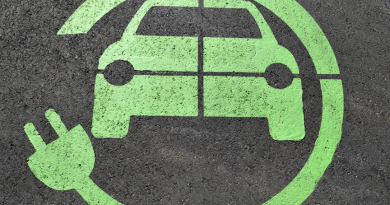Citizens protest against compulsion and coercion
Patrick van Schie is a historian and Director of the TeldersStichting, the liberal think tank of the Netherlands
Provincial elections in a relatively small country are not particularly likely to draw international attention, and so a large part of the world undoubtedly failed to notice that, on the 15th of March, elections were held in the Netherlands – a medium-sized country even from the perspective of its own inhabitants – for the Provincial Councils, the people’s representatives for the country’s 12 provinces.
Insofar as the foreign press covered the event at all, they reported the rise of yet another new right-wing ‘populist’ party, the Farmer-Citizen Movement (BBB). Whether it was the BBC or The Guardian, The Washington Post or Die Zeit, the international media seemed to agree that the Netherlands had become more firmly gripped by populism.
Populism is, however, a dubious concept in itself. The word is often used, especially by opponents of a party thus dubbed, with the intention of dismissing it, rather than gaining insight into its ideas, and I have argued this before (together with Fleur de Beaufort) in World Commerce Review (Summer 2021).
But the BBB, the party which from a national perspective became the largest in the Netherlands by polling 1.7 times the number of voters of the runner- up VVD of prime minister Mark Rutte, the largest party in government, has a profile which, on a number of counts, does not match that of the parties typically denoted as ‘populist’.
The importance of provincial elections in the Netherlands
Most of the Dutch population are not at all clear about the business of provincial governance, which is why they have little affinity with the Provincial Councils, which are, as it were, parliaments at a provincial level.
Throughout recent decades, the turnout rate for provincial elections has often remained below 50%. By way of comparison, the turnout for the election of the House of Representatives, the most important constituent of the national parliament, is generally between 75 and 85% of eligible voters.
Insofar as the provincial elections could be considered to be a benchmark, it was a poor one; the turnout of supporters for some parties was more reliable than that of others. The Christian democrats, for example, traditionally score better in provincial than in national elections.
The turnout on the 15th of March, however, was 57.5%. Although this remains significantly below that of parliamentary elections, a rising trend has been observed for some 15 years now for the provincial elections. This is directly related to the fact that in the Netherlands, the members of the Provincial Councils elect the members of the First Chamber – the Senate – according to an indirect system.
Thus, Dutch citizens can indirectly determine the composition of the national Senate for the next four years by means of the provincial elections, a fact which, for the majority of the voters, is almost certainly the most decisive factor in determining their choice.
Admittedly, at a national level political primacy lies with the House of Representatives, but the First Chamber (hereinafter referred to as Senate) must approve all laws and treaty adjustments, so it is able to obstruct the legislative work of a cabinet when it sees fit.
Since those parties which were traditionally the largest have diminished significantly, and parliament now comprises more parties than before, the formation of a new cabinet following elections for the House of Representatives has become an increasingly cumbersome process.
Whereas two parties from the former big three (the Christian Democrats, the Social Democrats and the Liberals) used to suffice to ensure an ample majority for a coalition in the House of Representatives, it now takes more parties, which then have to rely on a scantier majority.
The current Rutte IV cabinet is a 4-party coalition, supported by only 77 of the 150 members of the House of Representatives. As it was, the coalition didn’t have a majority in the Senate before the 15th of March and could count on only 32 out of the Senate’s 75 members. The most recent provincial elections are likely to lead to a loss of 10 of these 32 seats, meaning that more parties that do not form part of the coalition will be required to ensure a majority for legislative proposals.
Unless, that is, the coalition manages to secure the support of the new BBB. With 17 seats in the new Senate, this party has only 5 fewer seats in that chamber than the combined coalition parties and could ensure – on its own – that the legislative proposals of the cabinet are determined by the Senate.
It is now up to the old, established parties to show that the protest vote has indeed been heard, and that the casting of it has been meaningful. If voters are able to see this, democracy will have worked and faith in the democratic system will continue to be high
The comet-like rise of the BBB
The winner on March 15th is a very young party, only founded on the 1st of November 2019, yet in the elections for the House of Representatives in 2021, barely 18 months later, the BBB secured 1.0% of all votes. The March 2023 provincial elections saw an abrupt increase to 19.2%, and in three rural provinces in the north-eastern part of the country, the party secured roughly a third of all votes.
Considering the demographic makeup of the electorate, it is highly improbable that all of these votes were cast by farmers and their families, and indeed, the BBB appeared to be popular among other citizens as well.
In Leeuwarden, the largest city in the northern rural province of Friesland for instance, the BBB polled 17.4%. The BBB’s broad power of attraction is clearly evinced by the fact that the party even drew quite a few voters in the three largest cities in the West of the country: in Amsterdam, for example, they achieved 5.0%, in Rotterdam (with its international port) 8.2% and in The Hague (the seat of Dutch government) 8.7%.
Furthermore, the gains of the BBB come at the expense of a wide range of parties: traditional centre-right parties such as the liberal VVD and the Christian democratic CDA, as well as the right-wing nationalist parties like the PVV led by Geert Wilders, but a quarter also came from parties on the left of the political spectrum.
In addition, the BBB has been successful in drawing citizens who have not turned out for previous elections to the ballot box; about a quarter of the electorate stayed at home when the provincial elections were last held.
A similar picture emerges from the self-classification of voters. Of those voters who position themselves in the centre, 24% voted for the BBB. The percentage is 26 for voters who consider themselves to be moderately right, and 20 for those who see themselves as firmly on the right (among the latter, the liberal VVD did slightly better with 22%).
However, as many as 8% of moderately left-wing voters also opted for the BBB, and even 4% of firmly left-wing voters. This suggests that the BBB is actually more of a centre-right party capable of drawing in voters from the left of the political spectrum.
In terms of its political programme, the BBB cannot per se be classified as a right-wing party. Its manifesto is not complete (yet). For instance, it is not clear where the party stands with regard to foreign policy or defence, although the BBB’s sole member in the House of Representatives, popular front woman Caroline van der Plas, did condemn the Russian invasion of Ukraine.
When it comes to subjects touching on social legislation and healthcare, Van der Plas has so far voted more often with the left-wing opposition than with the centre-right parties. On the other hand, the BBB is in favour of a more stringent migration policy and stepping-up the investment in motorways.
Several politicians and media commentators have suggested that most BBB voters are older, less-educated people. Admittedly, the BBB is less popular among young voters, but the level of education is a fairly good reflection of the levels among the age groups from which the BBB draws most of its voters.
In this respect, too, the caricature of populism does not really fit. Furthermore, in contrast to other so-called ‘populist’ parties (such as Wilders’ PVV and the extreme-socialist SP on the left wing) the BBB does not wage opposition at any price. Van der Plas and her party members have intimated, also since their March election victory, that they want to bear the responsibility of governance in the provinces and use the clout of their seats in the Senate to deflect cabinet policy.
Nitrogen and the farming businesses under threat
The BBB’s main policy is its aspiration to put an end to the uncertainty that cabinet policy has introduced for farmers, and cattle farmers in particular. The issue is that, inspired by the political party D66, the second largest party in the present House of Representatives, a very substantial reduction of nitrogen emissions was incorporated into the coalition agreement of the Rutte IV cabinet.
D66 is the most left-wing of the coalition partners, and calls itself ‘social liberal’ (but it has been adopting an increasingly collectivist attitude). This reduction in emissions should theoretically prevent the further erosion of flora in numerous (often small) areas to which a protected-nature status has been attributed, because it is from agriculture in particular that a huge contribution to the nitrogen deposition in these protected areas is expected. The cabinet wants to achieve this chiefly by reducing overall livestock numbers, or even by the compulsory purchase of complete farming operations.
Although the agricultural sector has already realised a substantial reduction in nitrogen emissions by means of innovations, and also by decreasing livestock numbers, a methodical approach has been agreed at the instigation of left-wing coalition partner D66 which includes considerable reduction objectives that were to have been realised in 2030.
In the process, D66 is even demanding that livestock numbers be halved. Furthermore, the cabinet has not ruled out the instrument of the compulsory purchase of farms. Such a policy might be able to count on the support of left-wing urban voters but, in more rural regions in particular, much resistance has been caused by the cabinet’s rigid adherence to the methodical objectives and the imminent violation of property rights.
The BBB has indicated that two elements must be removed from the agenda without fail: firstly, that the proposed nitrogen reduction must have been fully realised in 2030 and, secondly that farmers may be subjected to compulsory purchase orders.
This may seem to be restricted to the interests of farmers, but the broad support of the BBB by wider society is indicative of a more fundamental aversion to the passion of politicians, civil servants and environmental organisations (often funded by taxpayers) in general for more and more regulation.
To many people, it seems that a reality exists in the governmental centre of The Hague which is expressed in the form of rules on paper – or worse, in computer systems – in which abstract goals are laid down and, quite frequently, stepped up.
This bureaucratic reality clashes with the materially visible reality inhabited by farmers and citizens which lies beyond the realm of governance. This phenomenon is not typically Dutch.
Centre of power versus periphery and a culture war
Outside the Netherlands, the country is often referred to as Holland. Holland is not, however, the same thing as the Netherlands. Holland, which is situated in the west of the country, consists of 2 of the 12 Dutch provinces.
If you add to Holland the most centrally-situated province of Utrecht, you have the 3 provinces in which ‘the Randstad’ is situated (a group of major cities including Amsterdam, Rotterdam, The Hague, Utrecht, Haarlem, Leiden, Delft and Dordrecht).
Even within these three provinces though, there are areas with a rather more rural or semi-rural character, such as a large area directly north of Amsterdam. In addition, the Netherlands includes 9 other provinces situated outside of this centre, and home to some 54.5% of the population.
Many of those living in the so-called peripheral provinces harbour a latent suspicion that they are being slighted. Added to this is the feeling which has existed for some years now that their areas are being overlooked when it comes to investment in infrastructure or culture and other amenities, while at the same time being expected to accommodate a disproportionately large number of asylum-seekers and install windmills – not the charming touristic versions but rather the tall, modern, horizon-polluting noisy ones – in their landscape.
Many people in these peripheral provinces have the feeling that a small group of left-wing voters – cosmopolitan and progressive – in the Randstad and the university cities are in favour of migrants and modern windmills, as long as these are accommodated in the outer provinces, as far from their own surroundings as possible.
In addition, the feeling of many ordinary Dutch people is that an attack is being carried out on their traditional way of life under the dubious flag of diversity. This is affecting traditions that are cherished throughout the Netherlands, but above all in the outer provinces, ranging from village entertainments like ‘road bowling’ – popular in the eastern part of the country – to the national celebration of Sinterklaas festivities, when the eponymous Christmas saint is accompanied by his highly contentious black helper, Zwarte Piet.
There also appears to be a gradual undermining of regional dialects and of the Dutch language itself. Many higher-education establishments conduct a policy of internationalisation, not least because it yields financial benefits. This implies that many students must be attracted from aboard, and is why many lectures are now delivered in (often very poor) English instead of Dutch.
International students are also prioritised in the allocation of the scarce accommodation in the cities where education is provided, with the result that Dutch students are often compelled to remain living at home with their parents for the period of their study and beyond.
Discontent and democracy
One common denominator behind this dissatisfaction which causes it to pervade the big cities as well, is the fact that voters have noticed that the government no longer delivers what they expect, and that traditional politicians orient themselves to a policy reality rather than to the reality inhabited by ordinary citizens.
To an increasing degree, this policy reality is determined by verdicts from unelected judges, who allow their own political bias to resonate in the interpretation of laws and treaties (judicial activism). These judicial verdicts are then presented – in combination with EU directives from Brussels – as adamantine (or TINA; ‘there is no alternative’).
Dutch people are definitely not inclined to rise up against judicial power as such, or even against EU membership, but increasingly often they are noticing that political decisions are no longer being made by democratic process but are rather being determined by untouchable institutions.
For the greater part, these phenomena are not unique to the Netherlands; similar growing dissatisfaction exists in many countries. To a degree, the Netherlands distinguishes itself from quite a few other countries in that, thanks to its electoral system, such dissatisfaction can easily be translated into seats in parliament.
The Netherlands has a system of proportional representation, with an electoral threshold that is not higher than the number of votes required for one full seat. This means that, for the House of Representatives, this threshold consists of a 150th part of the electorate, and that dissatisfaction can be channelled along democratic lines.
This happened in the recent provincial elections through a massive vote for a moderate party, which has been unjustly depicted as a sign of extremist populism. It is now up to the old, established parties to show that the protest vote has indeed been heard, and that the casting of it has been meaningful. If voters are able to see this, democracy will have worked and faith in the democratic system will continue to be high.




